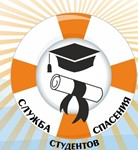Test Health and Human offspring
Content: 40205104425360.docx (13.13 KB)
Uploaded: 05.02.2014
Positive responses: 0
Negative responses: 0
Sold: 0
Refunds: 0
Seller: ИФЦ Студия
information about the seller and its items
Loyalty discount! If the total amount of your purchases from the seller more than:
| $25 | the discount is | 10% |
| $50 | the discount is | 20% |
$1.02
17. Health and pathological
Human offspring
17.1. Which of the following stages of human development does not relate to the prenatal period:
A) trehzarodyshevaya stage;
B) embryonic (embryonic stage);
B) stage of the fetus;
D) stage of puberty.
17.2. What type of constitution (morphological and anatomical features of the structure of the human body) does not exist:
A) hyposthenic;
B) hypersthenic;
B) normastenicheskogo;
D) superstenicheskogo.
17.3. Place the types of temperament from the increase in the intensity of neuro-psychic activity:
A) melancholic temperament;
B) the choleric temperament;
B) phlegmatic temperament;
D) sanguine temperament.
17.4. Which of the following symptoms does not diagnose impaired consciousness:
A) Human disorientation in space and time;
B) detachment from the outside world;
B) bessvyazannost thinking, confusion, speech, amnesia;
D) aggressive behavior.
17.5. A strong and relatively short emotional state associated with a sharp change in important subject circumstances and accompanied by a sharp change in the conscious activity and severe motor symptoms in psychology is called:
A) stress; B) affect;
D) schizophrenia; D) psychopathy.
17.6. A special form of emotional experience that occurs in extreme situations, and requires the mobilization of human neuro-psychic powers called:
A) sexual attraction;
B) fear; B) stress;
D) curiosity.
17.7. What reasons does not belong to deviant behavior (negative, disapproved, deviant from social norms)
A) the imperfection of human nature;
B) biological and psychological characteristics of man
B) social conditions;
D) solar storms.
17.8. Harmonious physical, mental and social well-being of a person referred to as:
A) euphoria; B) health;
B) wealth; D) prosperity.
17.9. The problems of bioethics (the term was introduced in 1971 by VR Potter) does not apply:
A) euthanasia;
B) termination of pregnancy (abortion);
C) the creation of clones; D) architecture.
17.10. What does not belong to the most important functions of population health:
A) social formations;
B) specific living labor in the industrial activity, which is done by individuals working within this population;
B) social and biological reproduction of subsequent generations;
D) education and training of future generations.
Human offspring
17.1. Which of the following stages of human development does not relate to the prenatal period:
A) trehzarodyshevaya stage;
B) embryonic (embryonic stage);
B) stage of the fetus;
D) stage of puberty.
17.2. What type of constitution (morphological and anatomical features of the structure of the human body) does not exist:
A) hyposthenic;
B) hypersthenic;
B) normastenicheskogo;
D) superstenicheskogo.
17.3. Place the types of temperament from the increase in the intensity of neuro-psychic activity:
A) melancholic temperament;
B) the choleric temperament;
B) phlegmatic temperament;
D) sanguine temperament.
17.4. Which of the following symptoms does not diagnose impaired consciousness:
A) Human disorientation in space and time;
B) detachment from the outside world;
B) bessvyazannost thinking, confusion, speech, amnesia;
D) aggressive behavior.
17.5. A strong and relatively short emotional state associated with a sharp change in important subject circumstances and accompanied by a sharp change in the conscious activity and severe motor symptoms in psychology is called:
A) stress; B) affect;
D) schizophrenia; D) psychopathy.
17.6. A special form of emotional experience that occurs in extreme situations, and requires the mobilization of human neuro-psychic powers called:
A) sexual attraction;
B) fear; B) stress;
D) curiosity.
17.7. What reasons does not belong to deviant behavior (negative, disapproved, deviant from social norms)
A) the imperfection of human nature;
B) biological and psychological characteristics of man
B) social conditions;
D) solar storms.
17.8. Harmonious physical, mental and social well-being of a person referred to as:
A) euphoria; B) health;
B) wealth; D) prosperity.
17.9. The problems of bioethics (the term was introduced in 1971 by VR Potter) does not apply:
A) euthanasia;
B) termination of pregnancy (abortion);
C) the creation of clones; D) architecture.
17.10. What does not belong to the most important functions of population health:
A) social formations;
B) specific living labor in the industrial activity, which is done by individuals working within this population;
B) social and biological reproduction of subsequent generations;
D) education and training of future generations.
# ReadyTestsKey
No feedback yet
